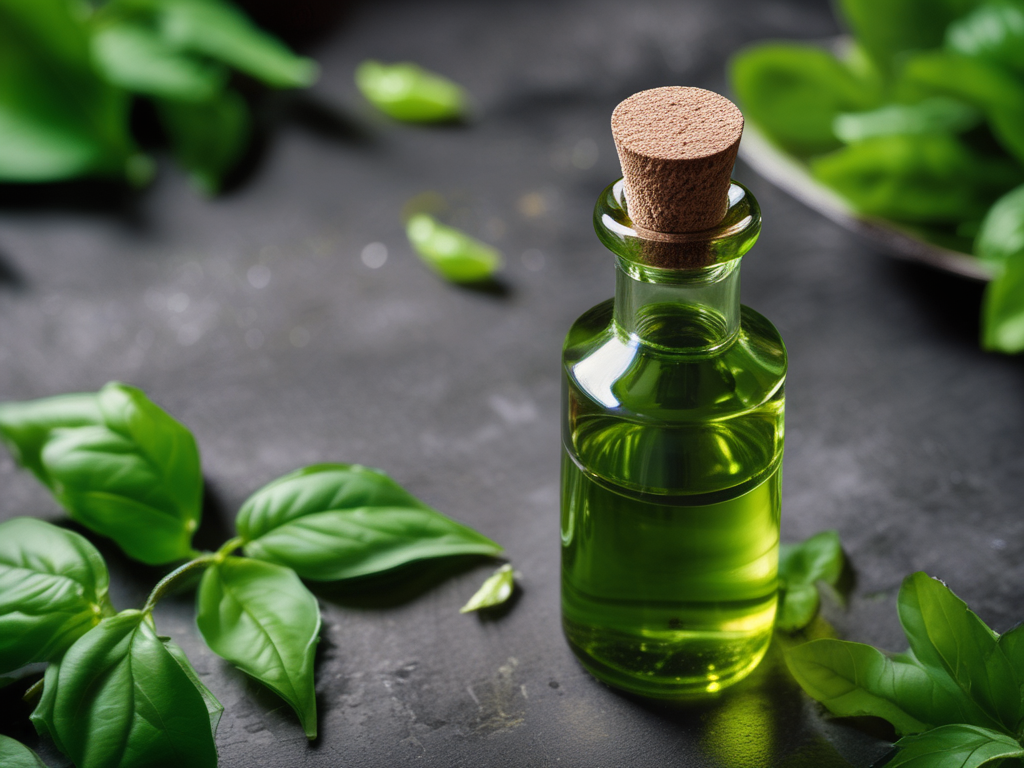A recipe for herb oil doesn’t have to be terribly complicated. It can be! It can be difficult, nuanced and also incredibly gratifying, but it certainly doesn’t have to be some kind of high-level thing. The recipe I have here is for a simple and fresh basil oil with tons of color.
Feel free to substitute the ingredients for this herb oil however you want! If you want something like tarragon and arugula with avocado oil to drizzle over grilled peaches, go for it! Cilantro and Mizuna in peanut oil for shrimp? Do it! Scallion and tatsoi oil over fried tofu is awesome. Just change around the herbs and greens until you get something that just sings in your mouth!
I like to use greens as well as herbs because the color becomes so richly intense. It’s also for the color that I blanch and refresh my greens. I talk about this a lot, but even with a great blender, pureeing the crap out of anything bright and fresh and vibrantly green darkens and dulls it until it gets to an unattractive brown goop. For a vibrantly green herb oil, you want to release as much of the chlorophyll as you can, which means you want to buy yourself whatever sort of safety net you can. By blanching and refreshing your greens, they become more stable to work with.

Another way to preserve the green color of any puree is to keep it as cool as possible (heat will turn greens dark and dull, which can even include the heat from blending too long). It’s a little tricky with oils because they’ll get cloudy if they get too cold, and they need to be room temperature to strain, but just paying attention to the temps of your blender and working area can go a long way toward giving you a vibrantly green herb oil.

Herb (or whatever greens you like) oil recipe
Ingredients:
- 1 # fresh basil, picked.
- 1 bunch fresh spinach, washed and trimmed. (Or about 1/2 of one of those small bags of washed spinach you find in the grocery store.)
- 1 qt oil (olive oil is great for basil oil, but for a lot of oils like cilantro or scallion, I prefer to use an oil with a more neutral flavor, like rice bran oil or grapeseed)
- 1 tsp salt
- 1 tsp freshly cracked black pepper
Method:
Bring a pot of salted water to a boil. Have an ice bath ready (cold water with lots of ice in it). Briefly submerge your herbs and greens in the boiling water (about 5-10 seconds) until they are bright green in color. It’s better if you do the herbs separately from the greens. Immediately submerge them completely in ice water, stirring to make sure every leaf cools as quickly as it can. When cold, drain. Squeeze out excess water.
Grab some paper towels or a clean towel that doesn’t shed and squeeze out even more water from your greens and herbs. Get them as dry as you can! Chop them into smaller pieces.
Put 2-3 layers of cheesecloth or a coffee filter into a strainer and suspend over a container. If you don’t have either, paper towels work for this.
Put herbs and greens into the blender with your oil, salt, and pepper, and blend well. You want to go as far as you can blending these together, being sure to stop before there is even a hint of brown. Watch the color!
Gently pour the mixture into the cheesecloth/coffee filter and allow it to drain. The oil should drain very slowly through your filter, so don’t be surprised if this takes a long time. If it’s draining slowly, you will have clearer oil with fewer sediments and deposits! That’s a good thing, so don’t be tempted to press it through the filter unless you’re fine with a cloudy oil.
Keep it in a cool and dark place and use it on everything!
*This post may contain affiliate links!
